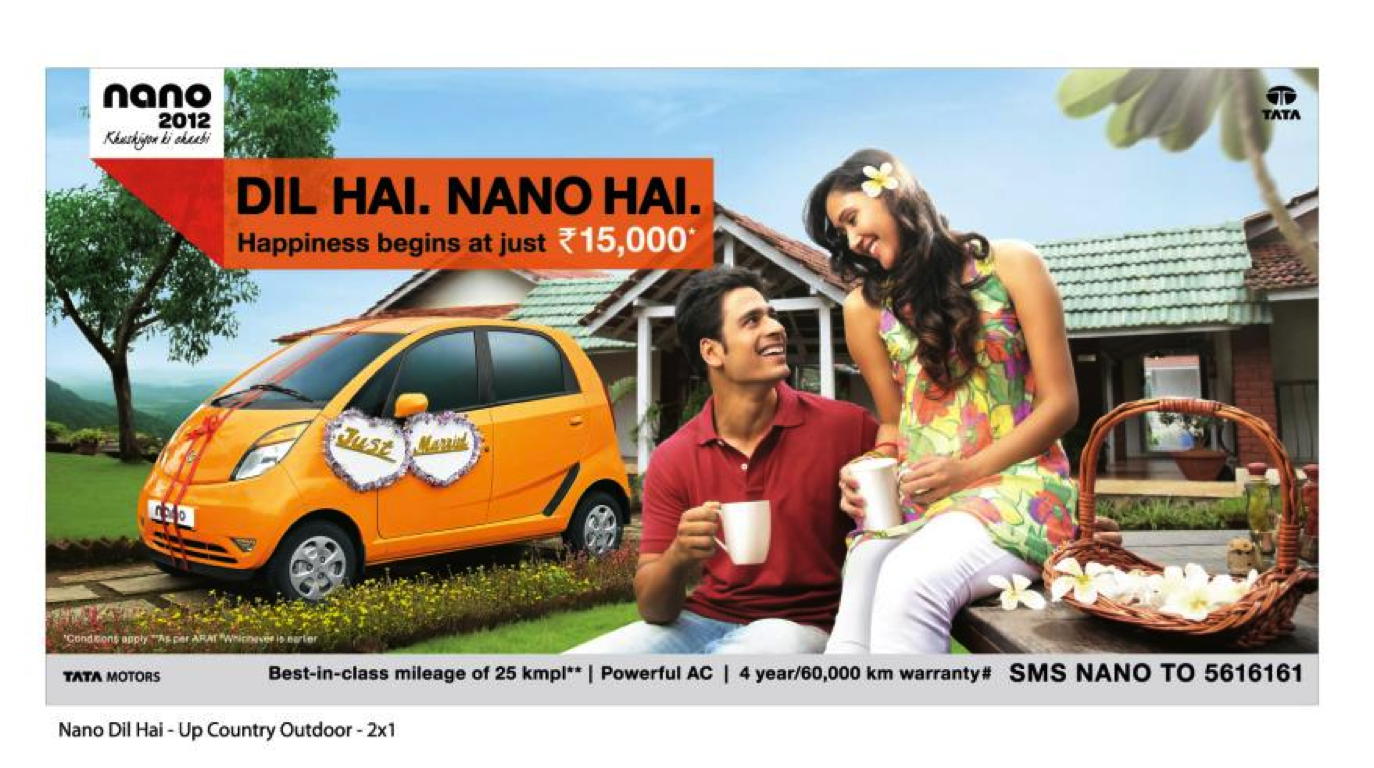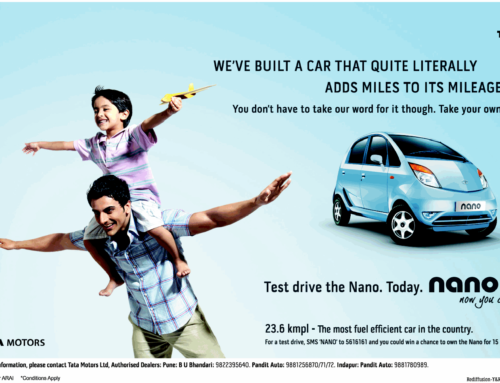Tata Nano has been a very interesting case. With predictions of roads getting clogged by the Nanos to the huge PR exercise about the world’s cheapest car grabbing the fancy of the marketers. What makes this case more interesting is the fact that most marketing gurus gave thumbs up to this concept car, without actually analyzing why and how. I would not harp on those stories and reviews as most of us are fairly clued on to it. What has spurred me in to writing this article is my lack of confidence on the marketing strategy of the product from day one, and of late huge number of post event rationalization articles. I recently happened to see an article where Scott Antony says why Nano is a No-No. And the reason for that has been made so simplistic. It has less features compared to a Maruti 800, which is not acceptable to the consumer and also in Mumbai bike is easier to park than a car. I would agree with view that Nano definitely has not lived up to its hype, but not necessarily agree with the reasons given thereof.
In purchase of any product there are many more considerations than just features and physical benefits. Especially when it comes to categories which are visible to others and do make a statement about the owner. This is where I introduce the concept of “Managing the boundaries of category shift”. The diagram below illustrates this.
What we see below is a pure purchasing power segment stacking. But not necessarily the way
Actual transitions happen. The reason behind this is purely psychological and more so in categories where the purchase takes away a large chunk of your savings and therefore going to be with you for long.
Traditional logic would say that a high end cycle owner would naturally like to own a Moped if it comes at similar cost, and a high end bike owner would naturally prefer to own a Entry Segment Car next. And that is possibly what lead Nano to go to town with the concept of the cheapest car in the world, in all PR and the initial advertising. But this is not the way consumers behave.
Don’t want to be at the bottom of my segment.
Most consumers would like to be at the top of the segment they belong to rather than at the bottom of the next segment. The reason being that the moment the consumer makes a shift in the product category, he moves to that category and very quickly forgets the fact that he belongs to the previous category. The feeling is very similar to the discomfort of being in an elite party when you are not one among them. You would rather be in you circle parties, where you are the revered guest. This comfort factor is very important especially for younger consumers, who are always worried about not belonging to the group they would like to. It may be my view with coloured glasses, but I find young Nano owners very conscious on the road. The older owners are pretty comfortable with their acquisition, possibly because for them it is a means to go from point A to point B. But that segment will never give Nano the peoples car numbers
Did you know which was the cheapest car before Nano ?
Possibility is that you would have to think. I can’t put my finger on it straight away. But post Nano you don’t have to think. Tata has therefore made sure that no Nano owner can escape the fact that they are driving the cheapest car in the world. And believe me that is not better than riding the most expensive bike in the country possibly.
Marketing team for Nano seemed to have missed this simple psychological segmenting. As a result the numbers don’t seem to stack up to any degree which could clog the roads. They are still selling much lower than Rs 3 lakh plus cars in the country. The team possibly also did not factor in the fact that Tata does not have a very premium image in passenger cars and hence lower price would only mean cheap. A Volkswagen at one lakh may not necessarily meet the same challenges for obvious reasons.
So was there a different way for Tata to launch Nano ?
Yes they could have, and some of it is seen from their new communications. But they are still confused. The emotional pitch to the consumer means it is still targeted at bike audience and not at a functional benefit. Functional benefit in my view is a larger segment today and possibly a smoother transition for the bike segment.
Selling to Functional Segment.
The fact that Nano is possibly the smallest and most uncomplicated car could satisfy a huge number of functional needs.
- ‘Beat the city congestion’ car – The first adopters would be the people who already own a car possibly but the numbers would be large. This still does not prevent the bike guy from owning it. He has a reason better than the cheapest car
- ‘Don’t let your college going girl on two wheeler’ car – And of course the father or the mother would not mind driving the car around sometime. We are not very ashamed of taking our son’s bike for a spin once in a way or if we are going somewhere close.
- ‘Don’t take your big car out for small distances’ car – In most cases it would have been possibly the second car, but still a larger segment based on ease of acceptance
Nano needed a very young and cheeky benefit driven campaign, whereas it somehow took on itself almost a heavy social responsibility of making the two wheeler owners switch to four wheels. While this would have lead the higher income group to possibly first adopt the car, it would have given the lower income group and the two wheeler owners a functional reason to shift, without feeling the discomfort of being at the lowest end of the car market. Today an Alto or an Indica may be the cheapest car, but it is not explicit. Therefore the segment which buys these cars are a combination of both first time buyers and second car buyers, who look at functional benefits and justify their purchase, rather than feeling that they bought the cheapest car. Though the reason could be the price.
Having said this, Nano’s current strategy of penetration of rural markets is possibly a good strategy and this strategy would have worked even if the car had been positioned as a good functional car.







